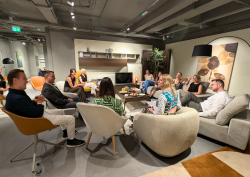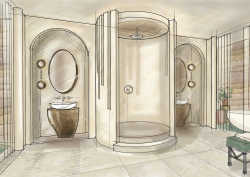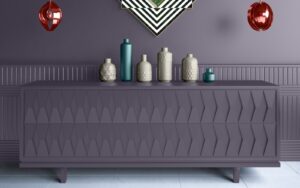Having been in the audience in the Fritz Hansen showroom during Clerkenwell Design Week, where Morten Lund Petersen, the brand’s sustainability manager, took on the task of giving us a deeper insight into questions and concerns around the process of specification and sustainability, writer Pauline Brettell sat down with him to take the conversation further…
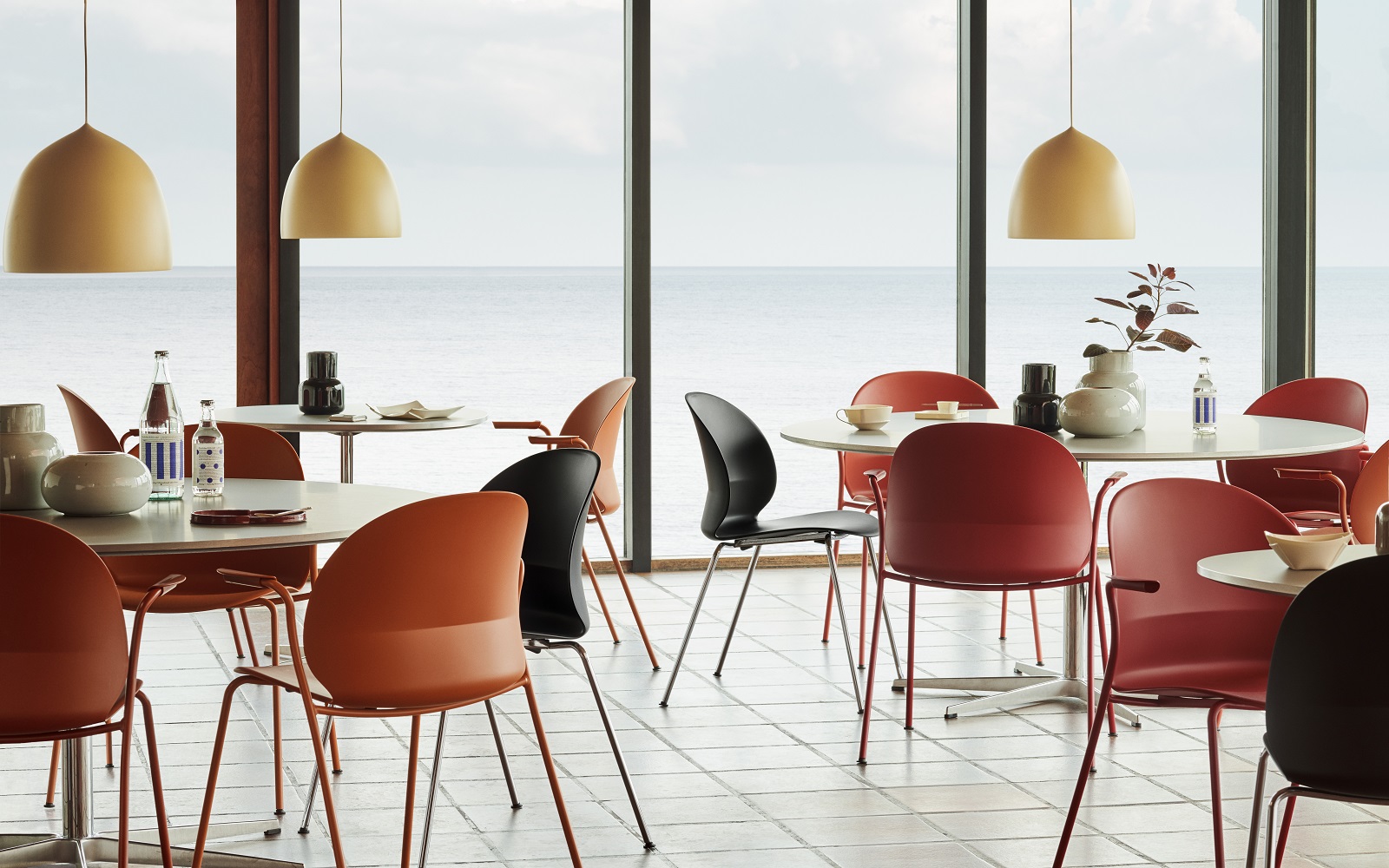
The story of Fritz Hansen is characterised by remarkable craftsmanship, bringing to life beautiful and functional designs. These design credentials are now amplified with the brands’ impressive track record for sustainability, which, with a clarity of purpose, is being implemented on every level of production. Part of this process is making information more accessible to designers through a deliverable Carbon Footprint product impact calculation.
As Sustainability Manager at Fritz Hansen, Lund Peterson is passionate about working with both suppliers and technical experts to innovate sustainable product solutions, ensuring that by collaborating with designers, partners and suppliers who share the brand values, we can all move towards making a positive and sustainable change.
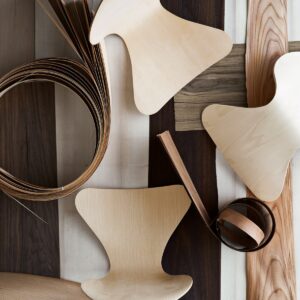
Image credit: Frtiz Hansen
Pauline Brettell: Can an industry like hotel design, that is profit-focused and is increasing its development rate, ever claim to be truly sustainable?
Morten Lund Petersen: I surely hope so, it is not easy but there are a lot of things you can do. Renovate instead of building new, repair instead of buying new, buy refurbished furniture instead of new, reduce food waste, cover your electricity use by a PPA. Keeping the interiors for longer, maintaining and re-editing. Don’t forget the social side of the equation — pay fair salaries and help the community around you.
PB: How has the understanding of longevity within conversations around sustainability changed the furniture specification process?
MLP: It is a balance between longevity, design for disassembly, clean and healthy materials and a clean production/supply chain process. At Fritz Hansen we mainly focus on the longevity and aesthetics of the product because life extension programs like reuse, repair, refurbish and remanufacturing is much better for the environment than recycling. And in respect of history, we must look back to how Danish design was initiated, learn from this and shape the future.
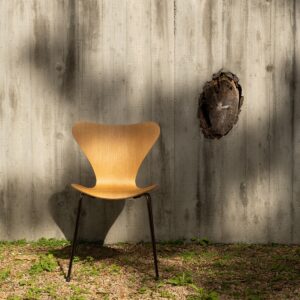
Image credit: Fritz Hansen
PB: Interior design is still fundamentally driven by trends and consumer demands. How can design avoid the pitfalls of short-term aesthetic gratification?
MLP: Learning from the past, being relevant in contemporary interiors (ways of living and meeting) and shape the future. Flexibility and design which can be maintained are key aspects for a longer lasting interior. Adding services like restyle and upgrade can extend the life of products, while considering changing trends and consumer demands. These models have again a much lower negative environmental footprint compared to buying new.
PB: In your opinion, what is the biggest challenge being faced by a company like Fritz Hansen on the road to sustainability?
MLP: Education of the younger generations is key, with an eye on collecting and curating interiors over time, with a focus on creating unique long-lasting designs. Also important is shifting the road from a linear world to circularity. It is about finding the right circular business models and making them profitable. There needs to be an incentive for companies to go circular, because in a circular world, unlike a linear model, companies are interested in keeping product alive as long as possible.

Image credit: Fritz Hansen
PB: The No2 collaboration with nendo is an interesting story in terms of its circularity – made entirely from household waste. Would you say this is one of your most sustainable products?
MLP: Yes and no, recycling is better than incineration and landfill. But there are lots of things we need to do first, as mentioned earlier, repair, refurbish etc. Our NO2 has for example, in an LCA, a carbon footprint of 36 kg CO2e, compared to Series 7 chair of 23 kg. CO2e. Experimenting, daring new things and learning from them is very important for the green transition that is needed – from that perspective the NO2 has been a great learning curve for us. But I would argue that our AJ stacking chairs are our most sustainable product.

Image credit: Fritz Hansen
PB: Would you or have you stopped production of an item based on a lack of sustainability credentials?
MLP: Yes, a great example of that is the white painted teak Skagerak collection that was discontinued due to a lack of sustainability credentials and despite dealer argument otherwise. In the future these decisions will I believe, be more common.
PB: With vintage trends comes circularity. Designs peak and trough but mid-century modern into which several of the Fritz Hansen classics fall is seeing a strong resurgence. Is this making life easier for you to meet your goals?
MLP: Yes definitely. The aesthetic durability of many classics from Danish design can teach us how to approach design, not following trends, but understanding communities and ways of living and meeting.
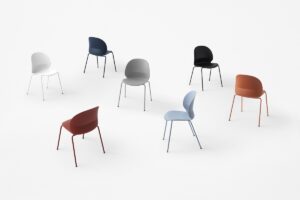
Image credit: Fritz Hansen
PB: Fritz Hansen is clearly looking at the ‘big picture’ when it comes to calculating the carbon footprint of a commercial project – making it quite a detailed and inevitably complicated process. Are there any guidelines in place for single items off the shop floor?
MLP: That will follow, but we need to make sure that the authorities support this, so that consumers can compare different products based on the same calculation methods. Our calculations are based on EUs PEF method that includes everything from harvesting the trees to end of life. The comparison needs to be fair for both consumers and competitors.
PB: A lot of your designs are classics. While the design stays the same, has production and material changed?
MLP: Yes, we are constantly improving our ways of working and have many improvements coming, while keeping the beautiful design intact.

Image credit: Fritz Hansen
PB: Slow fashion, slow living… is this lifestyle choice and trend playing out in furniture design and production – and importantly, consumption?
MLP: This is one of the key changes in behaviour, we need to slow down consumption by buying less but more quality and replacing buying with repair and reuse. We must also rethink how we build interiors and the aesthetic durability of many designs in the Fritz Hansen collection play a role in this curation.
PB: Finally, what is your personal favourite that hits all the sustainable targets?
MLP: PK25, very simple, very beautiful, very high quality, very easy to repair and in the end recycle. Can be made with a 100 per cent recycled material, we are not there yet, but soon.
Fritz Hansen is one of our Recommended Suppliers and regularly features in our Supplier News section of the website. If you are interested in becoming one of our Recommended Suppliers, please email Katy Phillips.
Main image credit: Fritz Hansen





